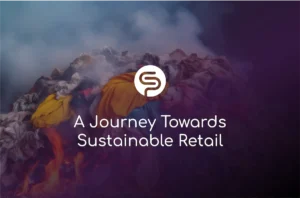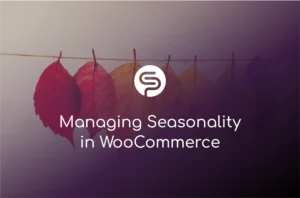The Triple Bottom Line
Small businesses are all around us, from the local plumbing service and the neighbourhood restaurant to the nearby salon. These businesses not only fulfil everyday needs but also build strong connections within their communities, often in ways that larger companies cannot. This unique position gives small businesses a powerful, yet often underutilised, opportunity to make meaningful contributions to their communities, particularly in the area of sustainability.
By embracing more efficient practices and highlighting their sustainability initiatives, small businesses can reduce their environmental footprint, foster stronger relationships with customers and employees, and enhance their financial performance.
Table of Contents
Small Business and Sustainability
Small businesses are a vital force in both local communities and the broader European economy. According to data from the European Commission, small and medium-sized enterprises (SMEs) were responsible for creating around 85% of new jobs in the EU between 2020 and 2024. SMEs also represented 99.8% of all businesses within the EU and contributed approximately 53% of the EU’s GDP. On a local level, the impact of small businesses is even greater. Research from Eurostat shows that about 67% of the revenue generated by local independent businesses stays within the community, compared to only about 30% for large chain retailers.
Sustainability practices are becoming increasingly influential in the European economy. According to a report by Simon-Kucher & Partners, 36% of European consumers are willing to pay a premium for sustainable products, with millennials and Gen Z leading the trend at 44% and 40%, respectively. Although these younger generations are the newest consumers, they are also the largest demographic groups in Europe and wield significant purchasing power. As their influence continues to grow, so does the importance of their preferences for sustainability.
For businesses, sustainability is closely tied to operational efficiency, meaning they must use fewer resources and less time to achieve the same level of productivity.
Barriers to Sustainability
For small businesses, financial survival is a consistent concern. When you’re just trying to stay afloat, it’s hard to think about long-term goals like sustainability, especially if you worry it might hurt your profits. But if you look at sustainability as a way to boost efficiency, you can actually make progress in this area without hurting your bottom line.
Another challenge is that small businesses don’t have the same level of accountability as big companies. Large businesses have boards, investors, and tough competition pushing them to innovate and pursue sustainability. Small businesses, on the other hand, are often run by the owners or their families and don’t have the same pressure. Sometimes local incentives and community support can help, but for the most part, it’s up to the owners to push for sustainability.
The Triple Bottom Line
The triple bottom line is a sustainability framework that calls for companies to focus on whether their business practices are aligned with the three Ps: people, planet, and profit. As an example, imagine a delivery company that utilizes route mapping software to optimize its delivery route. Examining this decision through the lens of the three Ps can highlight how the framework can be put into practice to benefit a business.
1. Good for the Planet
This aspect of the three Ps focuses on improving efficiency and reducing emissions and waste. As an example, for a delivery company, an optimized route reduces the time vehicles are on the road, decreasing overall emissions and improving the fleet’s efficiency.
2. Good for People
Businesses need to engage both their employees and customers by having a solid process and a strong mission. This helps attract and keep good workers. When a community sees that a company values strong principles and cares about them, people are more likely to stick around as loyal customers.
Looking at the three Ps framework and the example above, the new delivery route cuts down on the time drivers spend on the road. This means less fatigue and happier employees. Plus, customers benefit from faster deliveries and the eco-friendly approach of the new routes.
3. Good for your profit
To improve profitability, businesses need to seek to reduce expenses, whenever possible, even when increasing sustainability efforts.
The delivery company’s optimised delivery route allows it to reduce several expenses, including those related to gas costs, driver time, and vehicle wear.
How to build a sustainable business
Because of the diversity of small businesses, the specifics of what a focus on sustainability looks like will vary. There is no single way to have a positive impact; instead, companies can use principles, like the triple bottom line, as a framework to increase profit, sustainability, and their connection to both employees and customers.
The first step is to improve efficiency by lowering business costs and reducing the resources used to conduct business. Sometimes, shifting toward greater efficiency may require an upfront cost, but understanding downstream benefits and future cost savings will help small businesses determine the long-term value of these investments.
Second, small businesses can increase their impact by improving customer and employee experiences. Because small businesses are more intimately tied to their local communities, the relationships they develop with their customers, employees, and the broader community will have a larger impact on the business. A reputation as a good employer with values that align with business practices and a focus on sustainability is a huge boon to any business.
The three Ps can be used as a guiding star by small businesses to evaluate the company’s practices to ensure they are good for people, good for the planet, and good for profit. By regularly monitoring employee happiness, customer satisfaction, profit, and even their environmental impact, small businesses can gain additional insight into the effects of their decisions.
Make a difference with sustainable practices
Although governments, big businesses, and international agencies garner the most focus and research when it comes to sustainability, there is an enormous opportunity for small businesses to make a significant impact in their local communities.
Public opinion is clear, and companies should consider adopting more environmentally sustainable practices as an opportunity to capitalise on this growing support for sustainable products and businesses.
How Shelf Planner supports your 3 bottom lines...
1. Cost Saving
Implementing sustainable practices can reduce operating costs. For example, improving sell through and reducing waste can cut disposal costs.
Understanding how much to buy and when doesn’t only free up working capital, it also reduces mark downs and waste at the end of the products’ lifecycle.
2. Resilience
Sustainable practices can improve a business’s resilience to supply chain disruptions and resource shortages.
For example, using local suppliers or reducing waste can create a more reliable and adaptable business model.
3. Long term viability
Sustainability isn’t just about the environment; it’s also about long-term business health. Practices like conserving resources and minimizing waste can contribute to a business’s longevity and success.
Automated inventory management with Shelf Planner
Shelf Planner’s AI-based inventory management platform supports you with all the tools you need to optimise your business.







